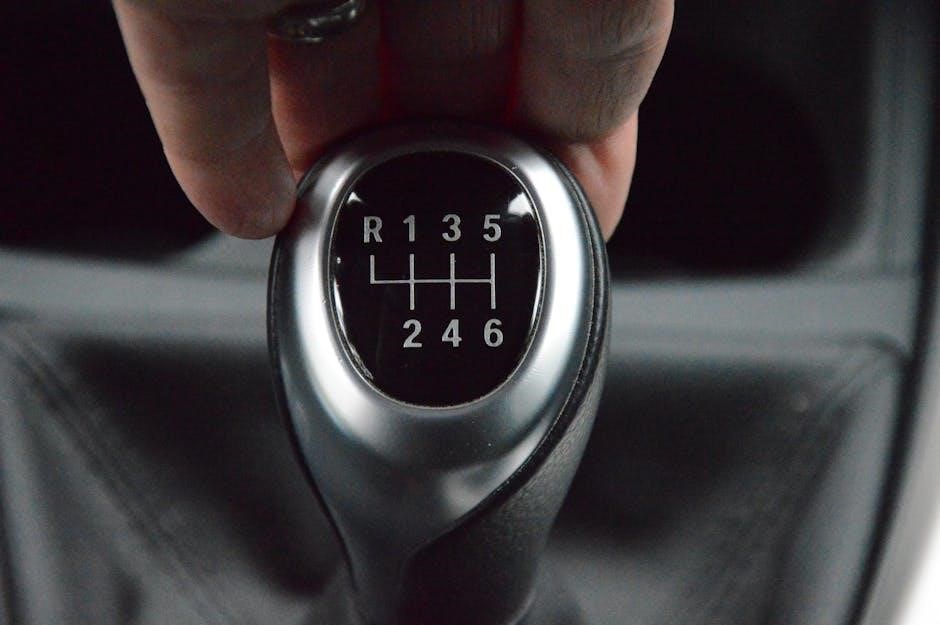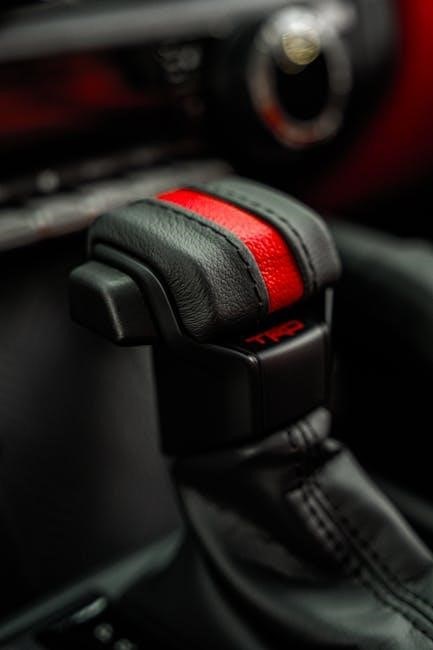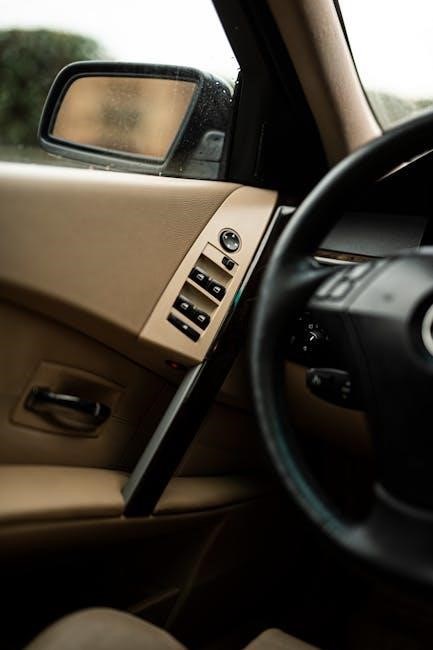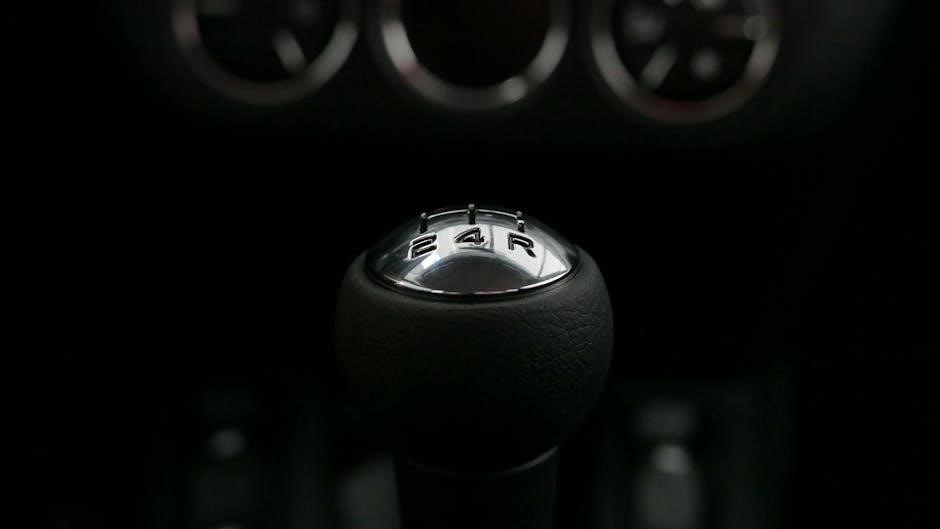montana driver’s manual

montana driver’s manual
The Montana Driver’s Manual is a comprehensive guide designed to help new drivers understand state motor vehicle laws, safe driving practices, and test preparation. It outlines rules of the road, traffic regulations, and essential safety tips to ensure responsible driving. While it is not a legal document, it serves as a valuable resource for learning Montana’s driving requirements. Courts refer to the Montana Code Annotated for legal matters, but this manual provides a clear, accessible overview for drivers.
Purpose and Scope of the Manual
The Montana Driver’s Manual is designed to provide a clear understanding of the state’s motor vehicle laws, safe driving practices, and the requirements for obtaining a driver’s license. Its primary purpose is to educate new drivers about the rules of the road, traffic regulations, and essential safety tips to promote responsible driving. The manual serves as a study guide for individuals preparing for written and road tests, ensuring they are well-prepared to operate a vehicle safely and legally. While it is not a legal document, it offers a comprehensive overview of Montana’s driving laws and practices, making it an indispensable resource for both new and experienced drivers. The manual encourages safe and respectful driving habits, emphasizing the importance of obeying traffic laws to protect oneself and others on the road.
Importance of the Manual for New Drivers
The Montana Driver’s Manual is an essential resource for new drivers, providing critical information to help them understand the state’s traffic laws, safe driving practices, and licensing requirements. It serves as a primary study guide for individuals preparing to take the written and road tests, ensuring they are well-informed about the rules of the road. The manual emphasizes the importance of safe and responsible driving, encouraging habits such as avoiding distractions, never driving under the influence, and always wearing a seat belt. By reading the manual, new drivers can gain the knowledge needed to pass their tests and develop good driving habits that will last a lifetime. It is a vital tool for anyone seeking to become a confident and responsible driver in Montana.

Types of Driver’s Licenses in Montana
Montana offers three primary types of driver’s licenses: Regular for personal vehicles, Commercial (CDL) for heavy-duty vehicles, and Motorcycle for two-wheelers, each tailored to specific driving needs and requirements.
Regular Driver’s License
A Regular Driver’s License in Montana is designed for operating non-commercial vehicles, such as cars, trucks, and vans, for personal use. It is the most common type of license and is required for drivers who do not need to operate commercial vehicles or motorcycles. To obtain this license, applicants must meet age requirements, pass vision, written, and road skills tests, and provide necessary documentation. The manual emphasizes the importance of understanding traffic laws, safe driving practices, and vehicle safety to ensure responsible driving habits. It also highlights the consequences of violating these rules, such as fines or license suspension. The Regular Driver’s License is essential for anyone seeking to drive legally and safely in Montana, and the driver’s manual serves as a key resource for preparing for the required tests and understanding state-specific regulations.
Commercial Driver’s License (CDL)
A Commercial Driver’s License (CDL) in Montana is required for operating commercial vehicles, such as semi-trucks, buses, and other large vehicles. The manual outlines the specific requirements for obtaining a CDL, including age restrictions, medical examinations, and specialized testing. There are three classes of CDLs: Class A for combination vehicles, Class B for heavy straight trucks, and Class C for small passenger vehicles or hazardous materials transport. Additional endorsements may be needed for operating school buses, tankers, or double/triple trailers. The manual emphasizes the importance of safety and legal compliance for commercial drivers, as they are held to higher standards than regular drivers. It also provides detailed information on the steps to apply for a CDL, including study materials and test preparation. Understanding the manual is crucial for commercial drivers to ensure they meet all state and federal regulations and operate their vehicles safely and responsibly.

Motorcycle License
To obtain a motorcycle license in Montana, applicants must meet specific requirements outlined in the driver’s manual. A motorcycle license allows operation of two-wheeled vehicles, and applicants must be at least 16 years old. A vision test and written knowledge test are required, followed by a motorcycle road skills test. The manual emphasizes the importance of safety gear, such as helmets and protective clothing, to reduce injury risks. Montana also offers a motorcycle endorsement for existing driver’s licenses, which requires completing a motorcycle safety course or passing the DMV’s tests. The manual provides detailed information on motorcycle-specific laws, such as lane splitting restrictions and passenger requirements. It also highlights the unique challenges of motorcycle driving, including visibility issues and handling techniques. Studying the manual is essential for new motorcyclists to ensure they understand and follow Montana’s traffic laws and safety guidelines for safe and responsible riding.
Montana Traffic Laws and Regulations

Montana’s traffic laws emphasize safe driving practices, including speed limits, seat belt use, and DUI prevention. They also outline right-of-way rules and penalties for violations to ensure road safety and accountability.

Speed Limits and Restrictions
Montana’s speed limits are designed to ensure safety on various road types. Urban areas typically have a maximum speed limit of 25-35 mph, while rural highways may allow up to 70 mph. School zones and construction areas have reduced speed limits to protect pedestrians and workers. The Montana Department of Transportation (MDT) sets these limits based on road conditions, traffic volume, and accident history. Drivers must adhere to posted signs, as exceeding speed limits can result in fines or penalties. Additionally, speed limits may vary due to weather conditions, such as snow or ice, requiring drivers to adjust their speed accordingly. It is crucial to follow these restrictions to maintain road safety and avoid accidents.
Seat Belt and Child Restraint Laws
Montana’s seat belt and child restraint laws are essential for ensuring the safety of all vehicle occupants. All drivers and passengers must wear a seat belt, regardless of their position in the vehicle. Children under 6 years old or weighing less than 60 pounds must be secured in a federally approved child restraint system. Rear-facing seats are required for infants under 1 year old or less than 20 pounds, while forward-facing seats are for children up to 4 years old or 40 pounds. Booster seats are mandatory for children until they are 8 years old or 4 feet 9 inches tall. Violations of these laws can result in fines and penalties. Exemptions apply only to vehicles manufactured before 1966 or those without seat belts. These regulations aim to reduce the risk of injury or fatality in the event of an accident, emphasizing the importance of proper restraint for all ages.

Driving Under the Influence (DUI) Laws
Montana’s DUI laws strictly prohibit operating a vehicle under the influence of alcohol or drugs. Drivers with a blood alcohol concentration (BAC) of 0.08% or higher face criminal charges, while commercial drivers are held to a stricter 0.04% limit. Penalties for DUI include fines, license suspension, and mandatory ignition interlock devices. First-time offenders may face up to 6 months in jail and a $1,000 fine, while repeat offenses result in harsher penalties, including longer jail sentences and higher fines. Refusing a breathalyzer test automatically leads to license suspension. Underage drivers face a zero-tolerance policy, with any detectable alcohol level resulting in consequences. DUI charges can also include enhanced penalties if a minor is present or if the BAC exceeds 0.16%. These laws aim to reduce impaired driving incidents and protect public safety. The Montana Driver’s Manual emphasizes the importance of adhering to these regulations to prevent accidents and fatalities.
Right-of-Way Rules
Right-of-way rules in Montana are essential for maintaining traffic flow and preventing accidents. These rules dictate who has the priority to proceed in various driving scenarios. Pedestrians always have the right-of-way in crosswalks, and drivers must yield to them. At four-way stops, the vehicle on the right has the right-of-way, or the first to arrive if two vehicles reach the intersection simultaneously. At uncontrolled intersections, drivers should yield to traffic already in the intersection or approaching from the right. When emergency vehicles with flashing lights or sirens are present, all drivers must yield and pull over to the right side of the road. Roundabouts require drivers to yield to traffic already in the circle and to pedestrians crossing at crosswalks. Merging onto highways also requires drivers to yield to traffic already on the main road. Understanding and following these rules is crucial for safe and courteous driving in Montana.
Safe Driving Practices

Safe driving practices emphasize avoiding distractions, never driving under the influence, and maintaining appropriate speeds. Always wear seat belts and ensure all passengers do the same. Respect traffic laws and other road users to ensure safety for everyone.
General Safe Driving Tips
General safe driving tips are essential for all drivers to ensure safety on Montana’s roads. Always stay alert and avoid distractions while driving. Maintain a safe following distance and adjust your speed according to road conditions. Be aware of your surroundings, including pedestrians, cyclists, and other vehicles. Use your mirrors regularly and check blind spots before changing lanes or turning. Never drive under the influence of alcohol or drugs, as it significantly increases the risk of accidents. Wear your seat belt and ensure all passengers do the same. Respect traffic laws, including speed limits and right-of-way rules. Keep your vehicle well-maintained to avoid mechanical failures. Stay patient and courteous to other drivers, avoiding aggressive behaviors. By following these tips, you can reduce the risk of accidents and contribute to a safer driving environment for everyone.
Distracted Driving Prevention
Distracted driving is a leading cause of accidents on Montana’s roads. To prevent it, keep your eyes on the road and hands on the wheel at all times. Avoid texting, browsing, or using your phone while driving. Eating, grooming, or engaging in conversations should also be minimized. Set your GPS or navigation system before starting your journey to avoid distractions. If you must attend to something, pull over safely. Teach passengers, especially teens, the importance of staying focused. Montana laws prohibit texting while driving, and violating these rules can lead to fines and increased insurance rates. By staying alert and avoiding distractions, you significantly reduce the risk of accidents and help create a safer driving environment for everyone on the road.
Night Driving Safety
Night driving requires extra caution due to reduced visibility and increased risks. Always use your headlights to make your vehicle visible to others and adjust your speed to match road conditions. Avoid using high beams when approaching other vehicles to prevent blinding drivers. Keep your windshield and windows clean to reduce glare from oncoming lights. If another driver is using high beams, look toward the right side of the road to avoid being blinded. Never drive if you’re fatigued, as night driving demands heightened alertness. Be aware of pedestrians, wildlife, and vehicles without proper lighting. Use reflective materials on your vehicle to increase visibility. Stay focused and avoid distractions like using your phone. If you’re unsure about road conditions, pull over safely until visibility improves. By following these tips, you can significantly reduce the risks associated with driving at night in Montana.

Study Resources and Materials
The official Montana Driver’s Manual is a primary study resource, offering detailed information on traffic laws and safe driving practices. Online practice tests provide interactive learning, while supplementary guides offer additional tips and study aids.
The Official Montana Driver’s Manual

The Official Montana Driver’s Manual is a detailed guide designed to help new and experienced drivers understand the state’s motor vehicle laws, safe driving practices, and licensing requirements. It serves as the primary study resource for anyone preparing to obtain a Montana driver’s license. The manual is available online as a downloadable PDF, making it easily accessible for residents. It covers essential topics such as traffic signs, road rules, and safe driving techniques. The manual also includes sections on driver responsibilities, vehicle safety inspections, and the consequences of violating traffic laws. Regular updates ensure the information aligns with current Montana Code Annotated regulations. While it is not a legal document, it provides a clear and concise overview of what drivers need to know to operate a vehicle safely and legally in Montana. It is a crucial tool for test preparation and lifelong safe driving habits.
Online Practice Tests
Online practice tests are an invaluable resource for individuals preparing for the Montana driver’s license exam. These tests are designed to simulate the actual written knowledge test, helping users assess their understanding of traffic laws, road signs, and safe driving practices. Many websites offer practice tests specifically tailored to Montana’s driving requirements, featuring questions similar to those found on the official exam. Users can choose from various formats, such as practice tests, marathons, or flashcards, to suit their study preferences. These tools are particularly useful for identifying areas where additional review is needed. By utilizing online practice tests, aspiring drivers can build confidence and ensure they are well-prepared for the test day. They complement the official Montana Driver’s Manual, providing an interactive way to reinforce learning and improve retention of key information. Regular practice helps individuals achieve their goal of obtaining a driver’s license efficiently and effectively.
Supplementary Study Guides
Supplementary study guides are additional resources designed to complement the Montana Driver’s Manual, offering in-depth information and specialized content for specific types of licenses. For instance, the Motorcycle Supplement Guide provides detailed instructions for motorcyclists, covering unique safety practices and road rules. Similarly, the Commercial Driver’s License (CDL) Manual is available for those seeking to operate commercial vehicles, outlining federal and state regulations. These guides are tailored to address the distinct requirements of each license type, ensuring applicants are thoroughly prepared. Online resources, such as flashcards and video tutorials, also serve as supplementary materials, helping learners engage with the content in different formats. By utilizing these study aids, individuals can gain a deeper understanding of complex topics and improve their readiness for the written and road tests. These guides are particularly useful for those who need additional support beyond the standard manual. They enhance the learning experience and contribute to safer, more informed drivers on Montana’s roads.

Test Preparation and Exam Details
The Montana Driver’s Manual is essential for preparing for the written knowledge test, vision test, and road skills test. Studying the manual ensures familiarity with state driving laws and safe practices, increasing the likelihood of passing all required exams.
Written Knowledge Test
The Written Knowledge Test is a critical step in obtaining a Montana driver’s license. It assesses understanding of traffic laws, road signs, and safe driving practices. The test is based on information found in the Montana Driver’s Manual, which covers topics such as speed limits, right-of-way rules, and DUI laws. To prepare, applicants should thoroughly study the manual, focusing on sections like traffic signals, pedestrian safety, and vehicle safety regulations. Practice tests are available online to help familiarize oneself with the test format and content. The test is typically multiple-choice and requires a passing score to proceed. It is essential to read the manual carefully, as the questions are designed to ensure applicants have a solid grasp of Montana’s driving rules and regulations. Proper preparation increases the likelihood of passing the test on the first attempt.
Vision Test Requirements
The Vision Test is a mandatory part of the licensing process in Montana, ensuring applicants can safely operate a vehicle. The test evaluates visual acuity and peripheral vision. Applicants must meet specific standards, such as a minimum visual acuity of 20/40 in both eyes combined or 20/70 in one eye and 20/40 in the other. Corrective lenses are permitted if needed, but applicants must provide proof of their prescription. If the initial test is failed, a medical professional’s evaluation may be required. The test is straightforward, typically involving an eye chart to measure acuity and a peripheral vision assessment. Accurate results are crucial for road safety. Failure to meet the vision requirements may result in a restricted license or further medical evaluation. This step ensures all drivers can see clearly enough to navigate Montana’s roads safely and responsibly.
Road Skills Test
The Road Skills Test is a critical component of obtaining a Montana driver’s license, assessing an applicant’s ability to safely operate a vehicle. Conducted by a certified examiner, the test evaluates various driving skills, including starting and stopping, turning, merging, and following traffic laws. Applicants must demonstrate proper control of the vehicle, good observation habits, and sound decision-making. The test is typically conducted in a variety of traffic conditions to simulate real-world driving scenarios. The examiner will score the applicant based on their ability to navigate these situations safely and efficiently. It is essential to arrive with a properly insured and registered vehicle, as the test cannot be administered without these requirements being met. Passing the Road Skills Test is a final step toward obtaining a driver’s license, ensuring new drivers are prepared to handle the responsibilities of driving safely on Montana’s roads.
What to Expect on Test Day
On test day, arrive early and be prepared with all required documents, including proof of identity, residency, and insurance. Ensure your vehicle is properly registered, insured, and in good working condition, as it will be inspected before the Road Skills Test. A licensed driver must accompany you to the test location. The test process typically includes a vision test, written knowledge test, and the road skills test. Be calm and follow the examiner’s instructions carefully. After completing all tests, you will receive feedback on your performance. If you pass, you will be issued a driver’s license. If not, you may need to retake the failed portion of the test after a waiting period. Proper preparation and understanding of the Montana Driver’s Manual will help ensure a successful test day experience.